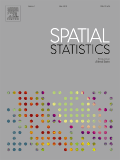
Spatial Statistics
Scope & Guideline
Empowering Decision-Making through Spatial Insights
Introduction
Aims and Scopes
- Spatial Modeling Techniques:
The journal emphasizes innovative methodologies for spatial modeling, including spatial autoregressive models, Bayesian approaches, and nonparametric techniques that address spatial dependencies and correlations in data. - Spatio-Temporal Analysis:
A significant focus is on spatio-temporal data analysis, where researchers develop models that account for both spatial and temporal dimensions, particularly relevant in fields like epidemiology and climate studies. - Application of Machine Learning:
With the rise of big data, there is an increasing incorporation of machine learning techniques, such as deep learning and neural networks, to enhance predictive capabilities and model complex spatial relationships. - Environmental and Ecological Applications:
The journal frequently publishes research that applies spatial statistical methods to environmental and ecological data, including studies on pollution, climate change, and wildlife management. - Geostatistics and Spatial Point Processes:
Geostatistical methods and spatial point process modeling are core themes, addressing issues like kriging, spatial interpolation, and point pattern analysis.
Trending and Emerging
- Integration of Machine Learning and Spatial Statistics:
The trend of integrating machine learning with spatial statistics is on the rise, showcasing new methodologies that enhance predictive accuracy and model complex patterns in large datasets. - Focus on Health and Epidemiology:
There is an increasing emphasis on health-related spatial statistics, particularly in modeling the spread of diseases like COVID-19, reflecting a growing interest in public health and epidemiological applications. - Environmental and Climate Change Research:
Research related to environmental statistics and climate change is gaining traction, with studies applying spatial methods to assess impacts on biodiversity, pollution, and natural resource management. - Big Data and Computational Methods:
The emergence of big data has led to a rising interest in computationally efficient algorithms and methods for handling large spatial datasets, including advancements in parallel computing and data fusion techniques. - Dynamic and Adaptive Spatial Models:
There is a clear trend towards developing dynamic and adaptive spatial models that can account for temporal changes and spatial heterogeneity, which is crucial for accurate forecasting and analysis in various fields.
Declining or Waning
- Traditional Geostatistics:
There appears to be a waning focus on traditional geostatistical methods, as researchers increasingly adopt more complex and computationally intensive techniques that can handle non-Gaussian data and high-dimensional settings. - Basic Spatial Autocorrelation Tests:
The use of foundational spatial autocorrelation tests, such as Moran's I and Geary's C, seems to be decreasing, possibly due to the development of more sophisticated models that incorporate spatial structure more effectively. - Static Spatial Models:
There is a noticeable shift away from static spatial models towards dynamic and adaptive approaches that better capture the changing nature of spatial phenomena, particularly in the context of time-varying data.
Similar Journals
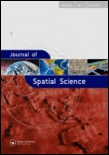
Journal of Spatial Science
Transforming Understanding of Our Spatial WorldThe Journal of Spatial Science, published by Taylor & Francis Ltd, serves as a prominent platform for the dissemination of research in the interdisciplinary fields of geography, atmospheric science, and energy. With an ISSN of 1449-8596 and an E-ISSN of 1836-5655, this journal has established itself as a vital resource since its inception in 2004, boasting an impressive convergence period extending to 2024. Recognized in the Q3 quartile for Atmospheric Science and Energy (miscellaneous), and achieving a Q2 classification in Geography, Planning and Development in 2023, the journal not only reflects the evolving complexities of spatial science but also underscores its increasing relevance in addressing contemporary global challenges. The journal holds a commendable position in Scopus rankings, with notable placements in various categories, further highlighting its academic significance. Researchers, professionals, and students are encouraged to engage with the rich content offered, as the Journal of Spatial Science remains committed to advancing knowledge and fostering discussions pertinent to spatial analysis and its applications.

ENVIRONMENTAL AND ECOLOGICAL STATISTICS
Empowering researchers with cutting-edge environmental statistics.ENVIRONMENTAL AND ECOLOGICAL STATISTICS, published by SPRINGER, stands as a premier journal dedicated to advancing the fields of environmental science and statistical methodologies. With an ISSN of 1352-8505 and an E-ISSN of 1573-3009, this journal has continually provided a platform for innovative research and interdisciplinary studies since its inception in 1994. Operating from the Netherlands, it enjoys a significant impact within the academic community, reflected in its impressive Q2 rankings across various categories including Environmental Science and Statistics. The journal maintains a strong focus on the application of statistical techniques to ecological and environmental problems, fostering an environment for discourse that is both robust and insightful. Although it does not currently offer open access, the depth and quality of research published within its pages position it as a vital resource for researchers, professionals, and students alike, eager to understand and address the complexities of environmental data analysis up to the year 2024.
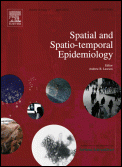
Spatial and Spatio-Temporal Epidemiology
Decoding the Geography of Disease SpreadSpatial and Spatio-Temporal Epidemiology is a premier journal dedicated to advancing the understanding of spatial patterns and temporal dynamics in epidemiological research. Published by ELSEVIER SCI LTD in the United Kingdom, this journal utilizes a robust interdisciplinary approach, blending methodologies from epidemiology, geography, and environmental science. With an impressive impact factor and categorized in the top quartiles for its fields—Q2 in Epidemiology and Q1 in Geography, Planning and Development (2023)—this journal excels in providing high-quality insights relevant to both academic researchers and public health professionals. The journal supports open access options, enhancing the dissemination and impact of scholarly articles. Since its inception in 2009, Spatial and Spatio-Temporal Epidemiology has published a myriad of studies that contribute significantly to understanding the geographical and temporal aspects of diseases, thereby serving as a crucial resource for anyone invested in improving public health outcomes and addressing infectious diseases globally.

Spatial Demography
Connecting People and Places through Rigorous ResearchSpatial Demography is a vital academic journal published by Springer International Publishing AG, focusing on the intersection of spatial analysis and demographic research. With its ISSN 2364-2289 and E-ISSN 2164-7070, this journal aims to advance understanding of population dynamics through innovative methodologies and spatially explicit data, offering a platform for researchers, professionals, and students engaged in demography, geography, and urban studies. While it does not currently operate under an open access model, Spatial Demography maintains a rigorous peer-review process to ensure high-quality publications that contribute significantly to the field. Given the growing importance of spatial data in demographic research, the journal serves as an essential resource for those looking to explore how spatial attributes influence demographic processes and patterns worldwide. The official address of the publisher is Gewerbestrasse 11, Cham CH-6330, Switzerland.

Geo-Spatial Information Science
Innovating Insights in Spatial Data AnalysisGeo-Spatial Information Science, published by TAYLOR & FRANCIS LTD, is a premier open-access journal that has been at the forefront of disseminating cutting-edge research since its inception in 1998. With an ISSN of 1009-5020 and an E-ISSN of 1993-5153, this journal plays a pivotal role in the fields of Computers in Earth Sciences and Geography, Planning and Development, achieving a prestigious Q1 ranking in both categories as of 2023. Its exemplary Scopus rankings highlight its relevance within the social sciences and earth sciences, placing it among the top echelons of its field, with a 95th and 93rd percentile respectively. The journal aims to bridge the gap between innovative geospatial technologies and their applications in real-world scenarios, fostering interdisciplinary collaboration and advancing the global understanding of spatial data analysis. Based in the United Kingdom, Geo-Spatial Information Science invites researchers, professionals, and students to contribute and access research that shapes the future of geo-spatial sciences, all while adhering to open access principles that ensure broad dissemination and engagement with the broader academic community.

Statistical Methods and Applications
Exploring the intersection of theory and application in statistics.Statistical Methods and Applications is a leading journal published by SPRINGER HEIDELBERG, dedicated to advancing the field of statistics and its applications in various domains. With an ISSN of 1618-2510 and an E-ISSN of 1613-981X, this journal serves as a vital resource for researchers and professionals looking to explore innovative statistical methodologies and their practical implications. The journal has demonstrated a notable influence within the scholarly community, ranked Q3 in both Statistics and Probability and Statistics, Probability and Uncertainty categories as of 2023. Covering a scope that spans from its inception in 1996 to the present, Statistical Methods and Applications provides robust platforms for empirical studies, theoretical advancements, and applied statistics. Although currently not open access, the journal is well-regarded for its rigorous peer-review process and commitment to high-quality research, making it an essential read for anyone dedicated to enhancing their statistical knowledge and expertise.
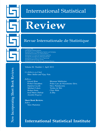
INTERNATIONAL STATISTICAL REVIEW
Fostering Excellence in Statistical CommunicationINTERNATIONAL STATISTICAL REVIEW is a prestigious journal published by Wiley, recognized for its significant contributions to the field of statistics and probability. With an impact factor reflecting its high citation rate and ranking in the top quartile (Q1) of relevant categories, this journal is a vital resource for researchers, professionals, and students alike. Covering a broad range of topics within statistical theory and application, it aims to disseminate innovative research findings and methodological advancements that shape the discipline. The journal's extensive history, converging years from 1982 to 2024, establishes its longstanding commitment to fostering scholarly communication in statistics. While it operates under a subscription model, its rigorous peer-review process ensures that published articles are of the highest quality, providing readers with insightful, reliable, and impactful content. For those looking to stay at the forefront of statistical research, the INTERNATIONAL STATISTICAL REVIEW is an indispensable addition to their academic resources.
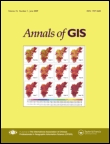
Annals of GIS
Shaping the Landscape of Geoinformatics ResearchWelcome to the Annals of GIS, a leading academic journal published by Taylor & Francis Ltd, dedicated to advancing the field of Geographic Information Science and its applications. With an ISSN of 1947-5683 and an E-ISSN of 1947-5691, this Open Access journal has been ensuring wide accessibility since 2019, thereby bolstering the dissemination of knowledge in areas such as remote sensing, spatial analysis, and geoinformatics. Hailing from the United Kingdom, the journal ranks impressively within its categories, achieving a Q2 status in Computer Science Applications and a prestigious Q1 ranking in Earth and Planetary Sciences for 2023, placing it in the top 10% among its peers. With a focus on innovative research spanning from 2009 to 2024, the Annals of GIS serves as a vital platform for researchers, professionals, and students alike, providing insights and fostering discussions that push the boundaries of geographic technologies and their real-world applications.
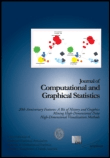
JOURNAL OF COMPUTATIONAL AND GRAPHICAL STATISTICS
Empowering scholars with cutting-edge insights in statistics.JOURNAL OF COMPUTATIONAL AND GRAPHICAL STATISTICS is a premier academic publication dedicated to advancing the fields of computational statistics and graphical data representation. Published by Taylor & Francis Inc, this journal stands out with its impressive Q1 rankings in Discrete Mathematics and Combinatorics, Statistics and Probability, and Statistics, Probability and Uncertainty, reflecting its high impact and relevance in contemporary research. Since its inception in 1992, the journal has been a vital resource for researchers, professionals, and students alike, with its rigorous peer-reviewed articles contributing significantly to the science of data analysis and visualization. With a Scopus ranking placing it within the top tiers of its category, the journal is committed to disseminating high-quality research that promotes innovation and methodological advancement. Note that the journal currently follows a traditional subscription model, ensuring focused and curated content for its readers. As it approaches the horizon of 2024, the JOURNAL OF COMPUTATIONAL AND GRAPHICAL STATISTICS continues to foster scholarly discourse and discoveries, making it an essential platform for anyone involved in statistics and data science.

ANNALS OF THE INSTITUTE OF STATISTICAL MATHEMATICS
Advancing the Frontiers of Statistical KnowledgeANNALS OF THE INSTITUTE OF STATISTICAL MATHEMATICS, published by SPRINGER HEIDELBERG, is a prestigious academic journal that has played a pivotal role in the field of statistical mathematics since its inception in 1949. With a focus on advancing research in statistics and probability, this journal is ranked in the Q2 quartile for 2023, indicating its significance and impact within the academic community. Researchers and professionals engaged in statistical theory and methodology will find the journal's comprehensive coverage of contemporary issues essential for furthering their work and understanding of the discipline. The journal is accessible in print and digital formats, facilitating wide dissemination of knowledge among its readership. With a history of rigorous peer review and a commitment to high-quality research, the ANNALS OF THE INSTITUTE OF STATISTICAL MATHEMATICS continues to be a vital resource for academics and practitioners alike.